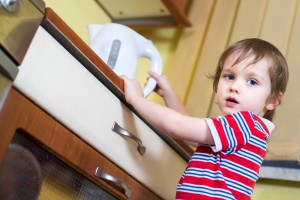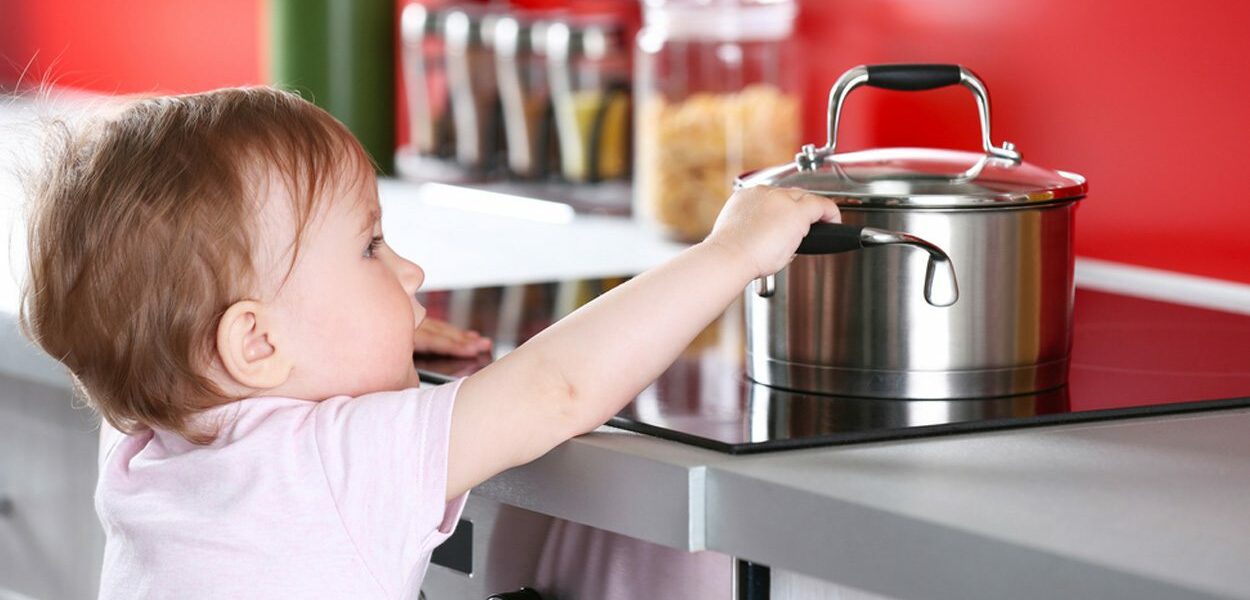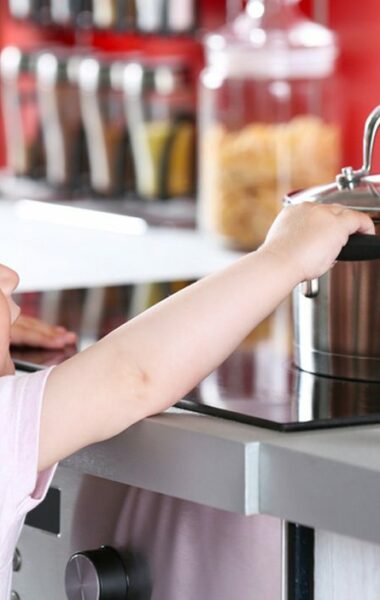If your child has a burn, keep calm – and follow the instructions below!
Determine the severity of the burn
- First degree burns: your child’s skin is red and is painful only in the burned area. These are superficial burns and you can generally treat them yourself. (See below under ‘First-degree burn? Always apply water first’)
- Second degree burns: your child’s skin is red with (cracked) blisters. Your child will feel pain in the burned area. With second-degree burns always go to your general practitioner. If the burns are large, go straight to the hospital.
- Third degree burns: your child’s skin has a white/grey colour. This indicates dead tissue. There is no pain in the burned area itself, but at the edges of the burn. Do NOT remove any clothing! Go directly to the hospital!
- Chemical and electric burns: if your child has burns from electricity (for example fingers in an electrical socket), or from chemical products, always call your general practitioner.
First-degree burn?
Always apply water first! Hold the burned area under lukewarm, flowing water for 10 to 15 minutes. Only cool the burned area, otherwise your child may become (too) cold.
Remove nappies immediately
If your child has been burned by a hot liquid (e.g. water or tea), the hot liquid may be retained in its nappy. Therefore remove nappies immediately.
Remove clothes only if not stuck to the wound
Only remove clothing if it is not sticking to the burn. If clothing has stuck to the wound this may indicate a more serious burn. In such a case call your doctor for advice.
Burn cream for children’s burns
A burn cream may only be used on a first-degree burn when the skin is whole (i.e. no blisters or open wounds). The burn cream will accelerate healing of such first-degree burns and minimise the chance of scar formation.
In case severe burns (second or third degree) only use burn cream if advised by your doctor.

